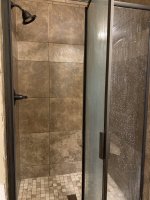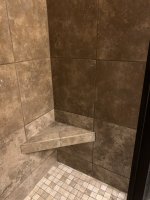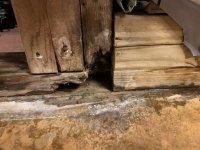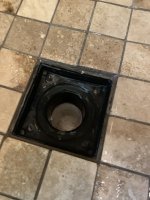A common reason for a shower to leak is that they don't do the curb correctly. Industry standards call for no penetrations of the waterproofing layer (liner) below 2" above the top of the curb. A common practice is to nail cement board (cbu) onto the curb through the liner, I guess, assuming that the tile is waterproof (not true). Another reason is to nail or screw the cbu along the bottom, beneath the top of the curb. Yet another is to not use curb corners where you must cut the liner to then fold it over the top of the curb and to poke a hole in it to anchor it. If they didn't put any sealant underneath the liner at the clamping drain (assuming it is a conventional shower pan), that can leak. Poking a hole in the liner during construction can allow leaks. Not having the drain properly aligned, with some drain types, could cause it. Having a leak in the plumbing could cause it.
IOW, there are LOTS of things that could have been done incorrectly that will allow leaks. Without having been there during construction, it's hard to say after the fact.
One thing you could do is borrow or buy a drain plug. Install that so it can't drain, then fill the pan up. That might help locate where it's leaking. You might also take the trim plate off of the shower valve and maybe the shower arm and see if that area is dry. IF the shower is built right, in the first hour or so, you might see the level drop as water gets underneath the tile, but then, it should stabilize. None of it should leak out of the shower, though. If there are any interior walls you could open up, you should then get a view of the back of the shower to maybe get an idea of where it is leaking. An inspection camera can help. On one of those, you don't need a big hole, and that's easily patched, if it's into drywall. Not as practical if it's an outside wall, but if you have vinyl siding, a piece can be removed, use a hole saw, and get a view inside. It's fairly easy to then put the plug back in, and then reinstall the siding.
Having it look good on the outside is no indication that it won't leak...the guts must be done right, first.




